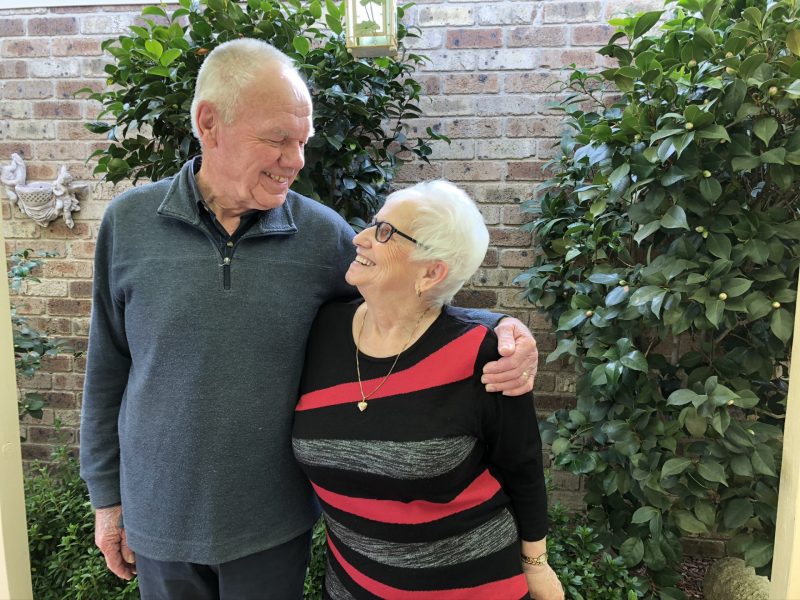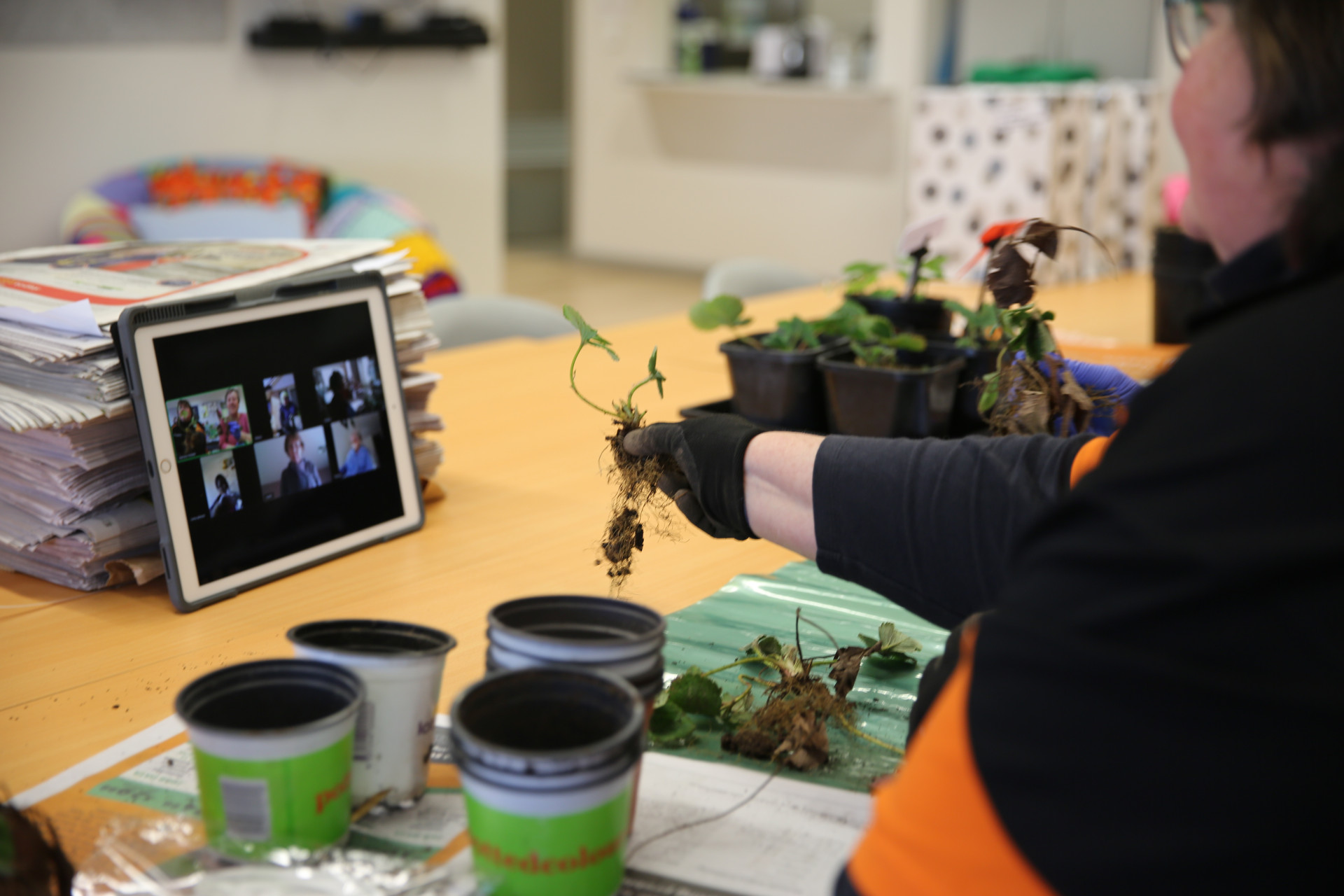If you were 84, had just gotten off THAT Ruby Princess cruise, and tested positive to coronavirus, you’d probably have serious alarm bells ringing. Not so for Canberra couple Frank and Christine Wybenga, 84 and 77. They were among 2,700 passengers on board the Ruby Princess in March this year for a 13 day cruise to New Zealand.

Photo: Frank and Christine Wybenga, passengers on the Ruby Princess, want to reassure other seniors who test positive to coronavirus (COVID-19).
Little did they know that their cruise ship would become the single largest source of coronavirus in the country, responsible for around 10% of all COVID-19 infections in Australia. The ship has been linked to at least 22 deaths, and more than 600 passengers (including themselves) and 171 crew have contracted the virus.
With so many negative stories circulating about COVID-19, Frank and Christine wanted to share a positive story about their own experience to show that not all is doom and gloom for seniors who become infected.
“We thought people might be interested in hearing something positive for a change because they’re always hearing the bad side,” said Frank. “Every time you turn on the radio or TV, what do you hear? How many people have died? How many people are sick or in the hospital. Well, we got the virus and sure, we didn’t feel the best. But you know, we’re okay again. So we just wanted to share our story to reassure people – particularly seniors – that not everybody who gets it will be in a bad way.”
Statistically, Frank and Christine were virtually in the highest risk category for catching the coronavirus: they were over 70 and right in the middle of Australia’s most infectious hotspot – the Ruby Princess ship.
“But when we were told we tested positive, we didn’t panic or get very anxious about it,” said Frank. “There wasn’t a vaccine yet, so there was nothing we could take for it. We just had to put up with it and hope for the best.”
“We’ve heard that a lot of people don’t even have the symptoms when they get infected,” said Christine. “But most people feel like we did – really tired and not feeling like eating or doing anything. We were lucky that we didn’t have any respiratory problems or have to go to the hospital.”

The Ruby Princess cruise in March 2020 became the source for around 10% of all COVID-19 infections in Australia. Image: 9News
Experiencing the COVID-19 Symptoms
Frank and Christine had been thoroughly enjoying their cruise, with no idea of the unfolding health crisis around them, until they received a note four nights before they were due to return to Sydney to inform them the ship had to come back early because of COVID.
“We later found out 128 passengers were sick on board the Ruby Princess,” explained Christine. “But we never saw anyone being sick. Everything was normal.
“When it was time to leave the ship we were expecting hold-ups but there were no health checks, or the usual queuing or passport control. We were just given a form and told to go into isolation for two weeks when we got home. That was it.”
Frank and Christine disembarked, took a taxi to the railway station and caught a train to Canberra. Other Ruby Princess passengers boarded at least 10 different flights home, unaware they could be unwittingly transmitting the virus around the country.
The day after they got home, Frank and Christine began to feel ill. “I was aching and could hardly move,” recalled Christine. “I was so tired and exhausted for nearly two weeks. I didn’t want to eat. Everything was too much for me. It was even too much to have a shower.”
Frank agreed. “I had the same thing. I didn’t feel like eating. Even a cup of coffee tasted awful! And you virtually couldn’t move, you know. You didn’t feel like doing anything. And that’s not me, because I’m always on the go.”
Classic symptoms of COVID-19 (coronavirus) include a fever, cough, sore throat and shortness of breath, which usually develop 5-6 days after you are exposed to the virus (but can even appear 2-14 days after). Less common symptoms include loss of smell and taste, loss of appetite, muscle and joint pain, diarrhoea and nausea.
When the drive-through testing clinic opened at the EPIC Showground in Mitchell, Frank and Christine decided to get tested. The results came back two days later. Positive.
“We weren’t surprised, considering how we’d been feeling for two weeks,” said Christine. “So we just stayed inside the house. We didn’t want to go out anyway. Our granddaughter used to bring our groceries and leave them in the garage. She couldn’t come into the house.
“Towards the end of those two weeks, I got really bad headaches for a few days. When that stopped and we had three days of no symptoms, the doctor from the health department said we were finally in the clear. He also suggested that we could give blood so they can work on trying to find a cure.”
All’s Well That Ends Well
Frank had nothing but praise for ACT Health. “The ACT Health Department rang us every morning for two weeks to see how we were and if we were getting worse,” he said. “They told us to stay inside, take it easy and don’t go out. They kept an eye on us. They were very good I thought and sent us lots of information.
“I think we’re all fairly lucky in this country the way they look after us,” Frank reflected. “You look at almost all other countries. They have more cases and more deaths than we do.”
Christine agreed, saying that overseas many people live in cities, often close together, making it much easier to get infected. “We come from Holland which has 40 million people in a country which is half the size of Tasmania.”
Frank nods. “In most countries, you can’t get away from people. That’s the beauty of this place. We have a lot of free space in Australia and Canberra, so you can get away.”
“Yes, we were lucky that things weren’t worse for us,” said Frank, “but I think having a positive mental attitude and relatively good health overall made a big difference to how we got through it.
“We make sure we exercise regularly, and that’s very important, especially as you get older. Christine and I go for regular walks and I also ride my bike. We stay as fit as we can. I feel good – like I used to years ago. When you keep physically healthy it means your body is stronger at fighting off illnesses.”
Frank and Christine also credit their positive mental wellbeing to an active social life. “A lot of seniors just stay at home and become very lonely,” said Christine. “We try to do something every day because we think that’s really important to stay connected to others.

Keeping socially connected through regular online hobby and chat sessions help seniors maintain mental wellbeing when isolated at home.
“Communities@Work has a great seniors program. We love going to their Tuesday group, catching up with friends, playing games and having a cuppa.
“We don’t go to all of the lunches and activities they organise because we’ve still got each other. But it’s great for a lot of seniors who are by themselves and could get lonely,” said Christine.
Due to Canberra’s COVID-free status, Communities@Work’s in-centre seniors program have recently resumed, but in a modified form and with reduced numbers to ensure a safe environment for clients. The seniors’ program is also running online group activities including gardening, cooking, exercise, bingo and craft, as well as assisted shopping trips and deliveries of activities to do at home to help their senior clients stay in touch with each other, engaged, and avoid feelings of social isolation.
Communities@Work’s variety of services and activities for seniors across Canberra focus on capacity building, wellness, inclusion, maintaining independence and social participation.
